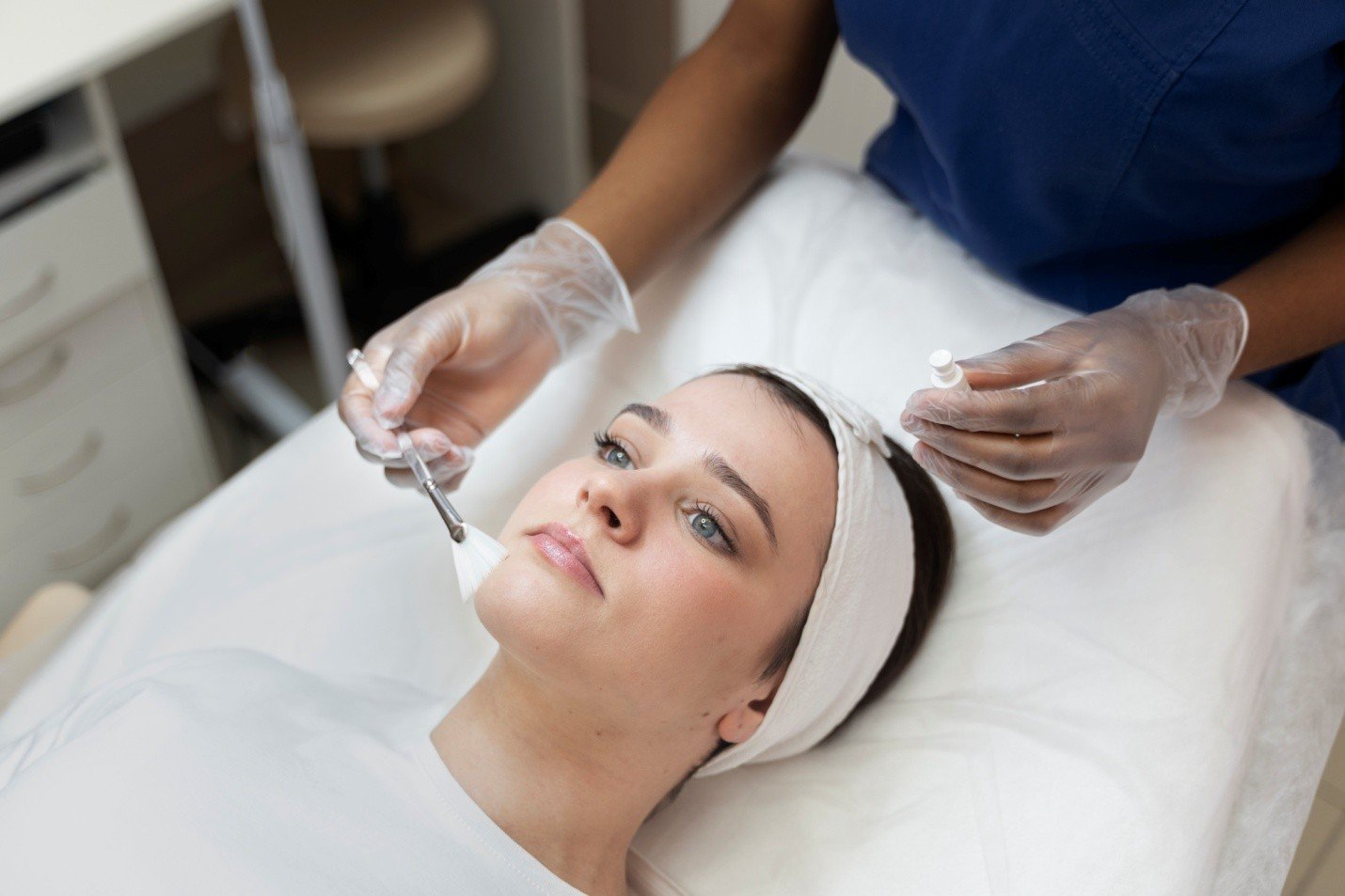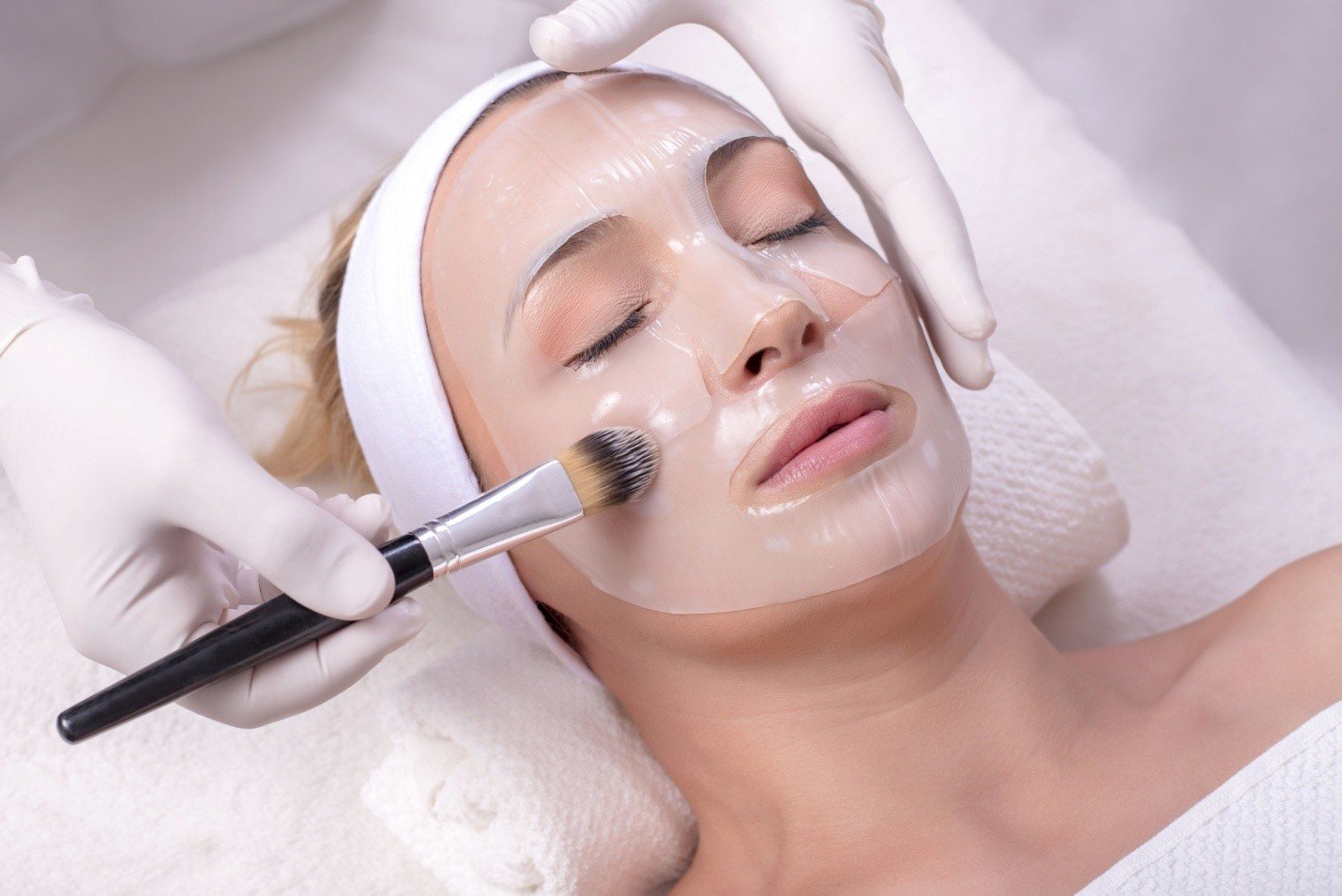What Is a Glycolic Acid Peel? Everything You Need to Know Before Trying It
Radiant, youthful, and smooth skin is something many people desire—but with environmental stress, aging, and daily exposure to pollutants, achieving that glow can be challenging. While regular exfoliation and skincare routines help, sometimes the skin needs a deeper reset. That’s where a Glycolic Acid Peel steps in—a dermatological treatment that gently renews the skin from within, revealing a brighter, fresher complexion underneath.
Glycolic acid peels are one of the most popular types of chemical peels used today, known for their effectiveness in improving skin tone, reducing fine lines, minimizing pigmentation, and enhancing overall skin texture.
If you’ve ever wondered what exactly happens during this treatment, how it benefits the skin, or whether it’s right for you, this guide will walk you through everything you need to know before trying it.


Understanding the Basics of Glycolic Acid
Glycolic acid belongs to a family of ingredients called alpha hydroxy acids (AHAs), which are derived from natural sources like sugarcane, citrus fruits, and beets. It has the smallest molecular size among all AHAs, which allows it to penetrate the skin deeply and efficiently.
When applied topically in controlled concentrations, glycolic acid helps dissolve the bonds between dead skin cells on the surface, allowing them to shed more easily. This exfoliation process accelerates cell turnover—stimulating new, healthier skin cells to come to the surface. The result? Smoother, clearer, and more radiant skin.
What makes glycolic acid special is its ability to address multiple skin concerns at once—whether it’s dullness, rough texture, uneven tone, or early signs of aging. Because it works at a cellular level, the results are not just superficial but also long-term with regular care.
How a Glycolic Acid Peel Works
A glycolic acid peel is a controlled exfoliation treatment performed under the supervision
of a dermatologist or licensed skincare professional. Unlike over-the-counter exfoliating
products, professional peels contain higher concentrations of glycolic acid (usually between
20%–70%), which allows for deeper penetration and more noticeable results.
Here’s what typically happens during the procedure:
- Cleansing: The skin is thoroughly cleansed to remove makeup, oils, and impurities.
- Prepping: A pre-peel solution may be applied to balance the skin’s pH and ensure even application.
- Application of the Peel: The glycolic acid solution is carefully applied using a brush or gauze. It is left on the skin for a few minutes—usually between 2 and 10—depending on the concentration and skin sensitivity.
- Neutralization: The acid is neutralized using a special solution to stop the exfoliation process.
- Post-Peel Care: A soothing mask, moisturizer, or sunscreen is applied to calm the skin and restore hydration.
Most people experience mild tingling or warmth during the treatment, but it’s generally well tolerated and non-invasive. The entire procedure takes about 30–45 minutes, making it a convenient option even for those with busy schedules.
Benefits of a Glycolic Acid Peel
The appeal of glycolic acid peels lies in their versatility. Whether you want to refresh dull skin, reduce fine lines, or treat acne scars, this peel can be tailored to suit your specific needs. Here are some of its most notable benefits:
Exfoliates and Renews the Skin
Glycolic acid breaks down dead skin cells, allowing new cells to surface. This results in a smoother texture and visibly brighter complexion after just a few sessions.
Reduces Fine Lines and Wrinkles
By stimulating collagen production, glycolic acid peels help improve skin firmness and reduce the appearance of fine lines and early wrinkles—giving the skin a youthful elasticity.
Fades Pigmentation and Dark Spots
Uneven skin tone and hyperpigmentation are common issues caused by sun damage or aging. Glycolic acid targets these areas by promoting even cell renewal, gradually fading discoloration for a more uniform tone.
Controls Acne and Breakouts
For those struggling with acne, glycolic acid can help unclog pores by removing excess oil and debris. It also reduces inflammation and prevents future breakouts by keeping the pores clean.
Enhances Skincare Product Absorption
Once dead skin cells are removed, skincare products can penetrate deeper and work more effectively, improving the overall results of your daily skincare routine.
Improves Skin Radiance
After a glycolic peel, your skin looks instantly refreshed and glowing. The increased circulation and renewed surface texture contribute to that healthy, luminous appearance.
Who Should Consider a Glycolic Acid Peel?
Glycolic acid peels are suitable for most skin types, especially for those dealing with mild to moderate skin concerns. You might be a good candidate if you experience:
- Dull or tired-looking skin
- Fine lines and early wrinkles
- Sun damage or dark spots
- Uneven skin tone or texture
- Mild acne or post-acne scars
However, individuals with extremely sensitive skin, active eczema, rosacea, or open wounds should avoid strong chemical peels unless recommended by a professional. Always consult a dermatologist before starting the treatment to determine the right concentration and frequency for your skin type.
What to Expect After the Procedure
After a glycolic acid peel, your skin may appear slightly red or feel tight for a few hours,
similar to a mild sunburn. Some light peeling or flaking may occur within a few days as old
skin cells shed naturally. This is a normal part of the process and reveals the fresh,
rejuvenated skin underneath.
Here are some key aftercare tips:
- Avoid direct sunlight for at least a week post-treatment.
- Apply sunscreen daily with SPF 30 or higher.
- Moisturize generously to maintain hydration and soothe the skin.
- Skip harsh scrubs and exfoliants for at least 5–7 days.
- Avoid makeup for 24 hours after the peel to allow the skin to breathe.
With proper aftercare, you’ll notice visible improvements in skin clarity and smoothness within a few days. Repeated treatments, spaced about 3–4 weeks apart, can lead to even more dramatic long-term results.
Glycolic Acid Peel vs. Other Chemical Peels
While glycolic acid peels are among the most popular, they are not the only type of chemical exfoliation available. Other peels, such as lactic acid, salicylic acid, and trichloroacetic acid (TCA) peels, target different skin needs.
Glycolic acid peels are particularly suited for gentle resurfacing, making them ideal for beginners or those seeking gradual improvements with minimal downtime. In contrast, TCA peels penetrate deeper, treating more severe pigmentation or wrinkles but requiring longer recovery. Salicylic acid peels work best for oily or acne-prone skin, while lactic acid peels are excellent for sensitive or dry skin.
The choice ultimately depends on your individual goals, skin sensitivity, and desired outcome—a professional can guide you toward the most suitable option.
How Often Should You Get a Glycolic Acid Peel?
The frequency of glycolic acid peels depends on the concentration used and your specific skin concerns.
For mild exfoliation, treatments every 4 to 6 weeks are ideal to maintain smoothness and radiance. If targeting acne scars or pigmentation, your dermatologist may recommend a series of 3 to 6 sessions, spaced several weeks apart, followed by maintenance peels once or twice a year.
Because glycolic acid promotes long-term skin renewal, consistent treatments combined with proper skincare yield the best results over time.
Common Myths About Glycolic Acid Peels
Myth 1: Peels Burn or Damage the Skin
In reality, professional glycolic acid peels are carefully formulated and controlled to ensure safety. Any temporary tingling or warmth subsides quickly after neutralization.
Myth 2: Peels Are Only for Aging Skin
Glycolic acid peels benefit all age groups—they help teenagers with acne, adults with pigmentation, and anyone looking to maintain smooth, radiant skin.
Myth 3: Results Are Temporary
While one peel delivers noticeable improvement, regular sessions can lead to lasting transformation in skin tone, texture, and elasticity.
Final Thoughts
A Glycolic Acid Peel is more than just a cosmetic treatment—it’s a rejuvenating experience that revives dull, tired skin and restores its youthful vibrance. With its ability to exfoliate deeply, boost collagen, and improve texture, it stands as one of the most effective non-invasive treatments for achieving healthy, glowing skin.
By understanding how it works, what to expect, and how to care for your skin afterward, you can safely enjoy the transformative benefits of glycolic acid peels. When performed by an experienced professional and paired with consistent skincare, this treatment can truly help you unveil a smoother, brighter, and more confident version of yourself.

